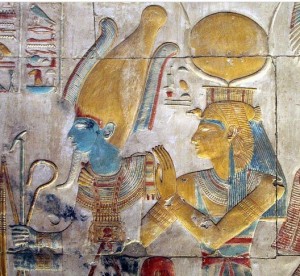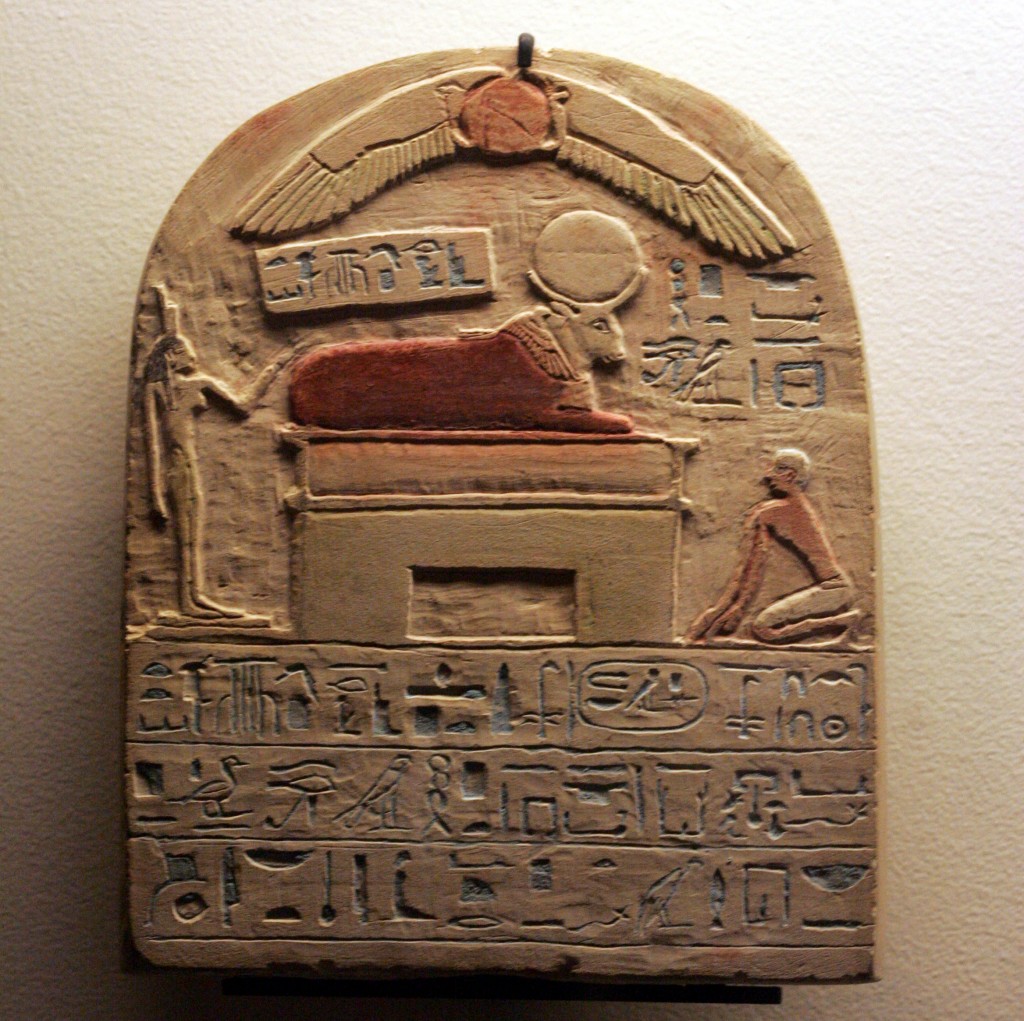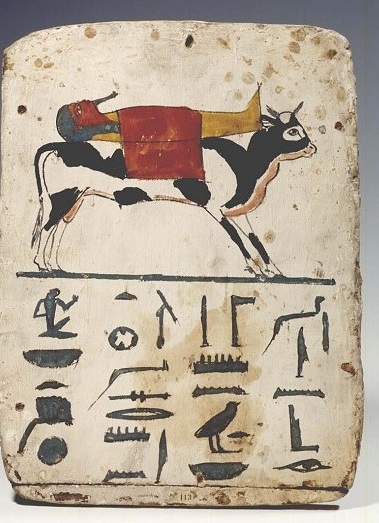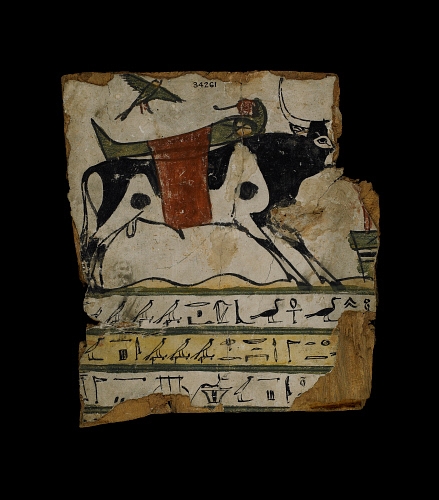Isis and Osiris were in the religion of Ancient Egypt the perfect couple. Despite the murder of Osiris, they could go on, Isis could revive her husband and both could have a boy. But Osiris was replaced by Apis.

Isis and Osiris. Relief from Abydos. XIX Dynasty. Photo: fineartamerica.
In the mortuary iconography of Ancient Egypt the union of Osiris and Isis was constant, as symbol of resurrection. However from the Saite Period, this icon suffered a transformation. Apis, the bull god of Memphis, was asimilated with Osiris, becoming after his death Osiris-Apis. And Apis in sometimes occupied the place of Osiris.
That is the case of the stele dedicated to Apis from the Louvre Museum. It dates from the reign of Psametik I and was found in the Serapeum of Saqqara. The god is identified as Osiris-Apis (that is Serapis) Khentamentiu and, following the traditional icon of Ancient Egypt, behind him stands Isis. She is not identified by any inscription, but by the hieroglyph of her head.

Stele to Apis. Reign of Psametik I. Louvre Museum. Photo: wikimedia
The ancient Egyptian artist here utilised the common image of Osiris on his throne followed by Isis. The artist just had to change the image of Osiris for the image of the bull Apis. As a dead god he was inseparable from Isis.
So, Apis was in Ancient Egypt a god related to the death. For his role as a mortuary god Apis was represented at the foot end of many coffins of Late Period transporting the dead to the necropolis.

Foot end of coffin with Apis transporting the mummy. XXV Dynasty. Vienna Museum. Photo: globalegyptianmuseum
In many cases the scene includes a bird flying upon the mummy.

Fragment of coffin from the late Period. The mummy being transported by a bull and over him the ba bird flying. Photo: British Museum.
And now it is the moment for a reflection:
- We have seen that Osiris-Apis is accompanied by Isis, his wife.
- We know that Isis as a kite was the mourning wife putting herself over the mummy of Osiris for giving him back the breathe and the virility.
- We know that the “ba bird” over the mummy could be an avatar of Isis when reviving her husband Osiris.
We could also think then that Osiris was replaced by Apis (becoming Osiris-Apis), but not Isis. And the bird flying upon the mummy carried by Apis could be a Late Period version of Isis during the process of resurrection in Ancient Egypt.